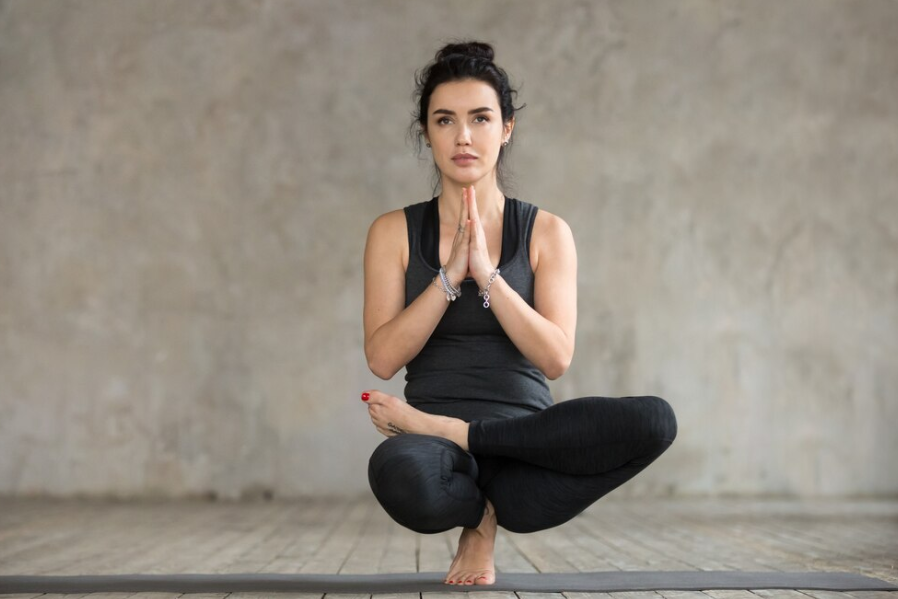Yoga is a holistic practice that encompasses physical, mental, and spiritual dimensions. Essential yoga poses, or asanas, can help enhance your practice and overall well-being. Here are some fundamental poses that form the foundation of a balanced yoga routine:
1. Mountain Pose (Tadasana)
- Benefits: Improves posture, strengthens thighs, knees, and ankles, increases awareness.
- How to do it: Stand with feet together, arms at your sides. Distribute weight evenly through your feet. Lift your chest and engage your thighs. Breathe deeply and hold.
2. Downward-Facing Dog (Adho Mukha Svanasana)
- Benefits: Stretches the hamstrings, calves, and spine, strengthens arms and legs, relieves stress.
- How to do it: Start on your hands and knees. Lift your hips up and back, straightening your legs and arms. Press your heels towards the floor and your chest towards your thighs.
3. Warrior I (Virabhadrasana I)
- Benefits: Strengthens legs, opens hips and chest, improves focus and balance.
- How to do it: Step one foot forward into a lunge, keeping your back leg straight. Raise your arms overhead, palms together. Square your hips to the front.
4. Warrior II (Virabhadrasana II)
- Benefits: Strengthens legs and core, improves balance and stability.
- How to do it: From Warrior I, open your hips and shoulders to the side, extending your arms parallel to the floor. Look over your front hand.
5. Triangle Pose (Trikonasana)
- Benefits: Stretches legs, hips, and spine, improves digestion, reduces stress.
- How to do it: Stand with legs wide apart. Extend your arms at shoulder height, then reach forward and tilt your body sideways, touching your shin or the floor with one hand while the other hand extends upwards.
6. Tree Pose (Vrksasana)
- Benefits: Improves balance, strengthens legs and core, enhances focus and concentration.
- How to do it: Stand on one leg, placing the sole of your other foot on your inner thigh or calf (avoid the knee). Bring your hands together in front of your chest or extend them overhead.
7. Seated Forward Bend (Paschimottanasana)
- Benefits: Stretches the spine, shoulders, and hamstrings, calms the mind, relieves stress.
- How to do it: Sit with legs extended. Inhale, lengthen your spine, and exhale as you fold forward, reaching for your feet or shins.
8. Bridge Pose (Setu Bandhasana)
- Benefits: Strengthens the back, glutes, and hamstrings, opens the chest and shoulders, stimulates the thyroid.
- How to do it: Lie on your back with knees bent, feet hip-width apart. Lift your hips towards the ceiling, clasping your hands under your back for support.
9. Child’s Pose (Balasana)
- Benefits: Gently stretches the hips, thighs, and ankles, relaxes the spine, calms the mind.
- How to do it: Kneel on the floor, sitting back on your heels. Extend your arms forward and lower your torso, resting your forehead on the ground.
10. Corpse Pose (Savasana)
- Benefits: Promotes relaxation, reduces stress, helps in meditation.
- How to do it: Lie flat on your back with arms at your sides, palms up. Close your eyes and focus on deep, even breathing.
Tips for Your Practice
- Breathe deeply: Focus on your breath to enhance relaxation and mindfulness.
- Listen to your body: Avoid pushing yourself into painful positions.
- Stay consistent: Regular practice leads to better flexibility, strength, and mental clarity.
- Use props: Blocks, straps, and blankets can help you achieve correct alignment and make poses more accessible.
Incorporating these essential yoga poses into your routine can greatly enhance your practice and contribute to your overall well-being.



